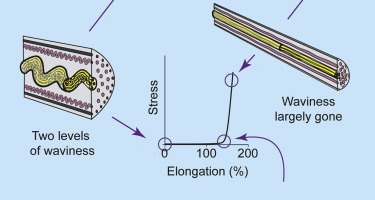
(Graphical abstract by Lillie et al.)
Rorqual whales – a family of baleen whales that includes the biggest of the species, the fin and the blue whale – take in an enormous amount of water and small prey during each feeding. In order to maximize each meal, they open their mouths wide and lunge towards the prey. In the process, the whales’ feeding pouches stretch out and the nerves in the mouth double in length. Scientistswere puzzled at how these nerves underwent such stress so often without damage, until a recent study uncovered the nerves’ unique double-wave structure.

The tortuous path of the nerve core through an outer sheath resembles a river meander, but the core wanders in three dimensions. Nerve fascicles can be seen inside the core. They are also wavy, but at a smaller length scale than the core. The whole nerve is 8 mm wide. (Image by Margo Lillie)
Using micro-CT scanning and other tests, researchers scanned six intact nerves preserved in formalin. They found that the nerves were wavy on two scales: the large-scale waviness allows the nerves to elongate with body movement; and the smaller-scale waves give the nerves the extra slack they need to go around tight folds without suffering damage.
Authors:
Margo A. Lillie, A. Wayne Vogl, Kelsey N. Gil, John M. Gosline, Robert E. Shadwick
Corresponding author:
Margo Lillie, Department of Zoology, University of British Columbia, Vancouver, Email: lillie@zoology.ubc.ca
Original paper published in Current Biology on February 16, 2017.


